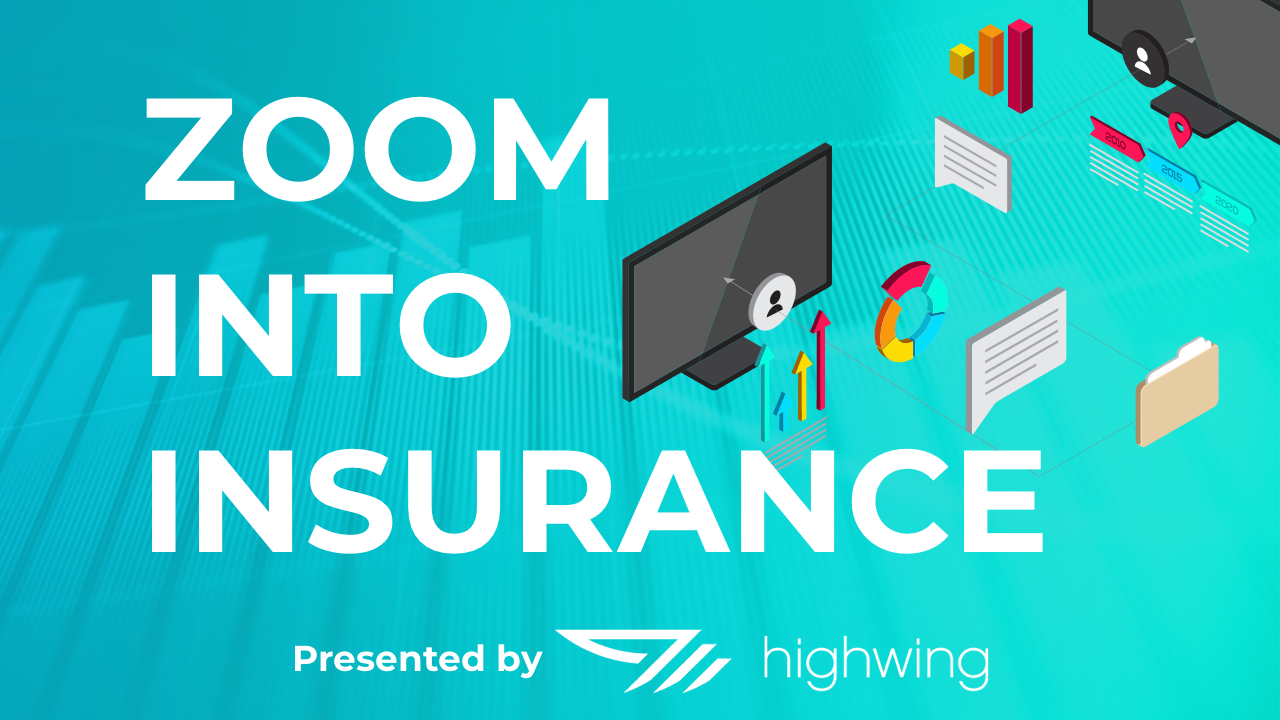Coming soon: Zoom Into Insurance
Next week, we are launching Zoom Into Insurance, a monthly video and podcast series where we bring together insurance professionals and innovation...

Once known for its paper trails and meticulous record-keeping, the insurance industry is experiencing a digital makeover more dramatic than a superhero's costume change. Forget dusty filing cabinets and endless phone calls—artificial intelligence (AI) and Generative Pre-trained Transformers (GPTs) are the new superheroes in town, promising to revolutionize insurance brokers' operations.
But before we discuss their superpowers, we’ll first examine these technologies and their origins. From there, we’ll delve into how AI and GPTs will empower insurance brokers with powerful capabilities, from personalized customer engagement to advanced risk management. And, of course, like any good story, there will be an obligatory plot twist at the end.
On November 22nd, 2022, San Francisco-based Open AI launched Chat GPT. Since then, AI and GPTs have dominated the face of business. But the story behind these technologies began long ago. In fact, we saw the earliest AI versions compete against humans on the famed television show Jeopardy in 2010. It has only recently been that the power of AI and GPTs has become readily accessible to individuals and small businesses.
AI and GPTs represent the cutting edge of technological innovation and are poised to reshape every industry, including insurance. Here's a breakdown of these technologies and their rise to prominence.
Artificial Intelligence (AI): AI is a branch of computer science concerned with creating intelligent machines that can mimic human cognitive functions such as learning, problem-solving, and decision-making. The concept of AI dates back to the 1950s, but significant advancements have occurred in recent years due to several factors:
Generative Pre-trained Transformers (GPTs): GPTs are a specific type of AI model trained on massive amounts of text data to generate human-quality text, translate languages, write different kinds of creative content, and answer questions in an informative way. Here's a simplified explanation of their rise:
The combined capabilities of AI and GPTs offer immense potential for insurance brokers and carriers. AI can automate tasks, analyze data for risk assessment, and identify fraud. GPTs can personalize communication, generate reports, and answer customer inquiries naturally and informally. And this is only the beginning.
Now imagine a world where potential clients can interact with your brokerage 24/7, receiving personalized answers to their questions and streamlined quote generation. AI-powered chatbots and GPT technology can facilitate this reality. With an AI-powered chatbot, brokers and carriers can qualify leads, answer frequently asked questions, and schedule appointments—all while learning customer preferences and tailoring responses over time.
Furthermore, GPTs can automate tasks, like generating personalized policy summaries and quotes based on client data and risk profiles. A study by McKinsey & Company found that 70% of customers expect companies to use their data to personalize their interactions. By leveraging AI and GPTs, brokers can deliver a superior customer experience that fosters loyalty and drives growth.
The vast amount of data insurance companies collect presents both challenges and opportunities. AI excels at analyzing this data to identify anomalies and patterns indicative of fraudulent activity. Advanced AI algorithms can detect suspicious claims, analyze application inconsistencies, and flag potential red flags, allowing brokers to intervene and protect their clients proactively.
For instance, IBM Watson, a leading AI platform (and Jeopardy champion), offers solutions designed specifically for the insurance industry, including fraud detection and risk assessment tools. By harnessing AI's power, brokers and carriers will strengthen their security measures and mitigate financial losses due to fraud.
Beyond automation, AI unlocks a treasure trove of valuable insights for brokers. AI can analyze historical data, market trends, and even weather patterns to predict future risks and recommend tailored insurance coverage options. This enables brokers to provide proactive risk mitigation strategies that go beyond simply offering quotes.
Furthermore, GPTs can be used to generate custom reports and risk mitigation plans for each client, empowering them to make informed decisions about their insurance needs. A report by Accenture highlights that insurers leveraging AI to improve risk selection can achieve a 10-20% reduction in loss ratios. By leveraging AI and GPTs for risk analysis, brokers can position themselves as trusted advisors, creating a more strategic partnership with their clients.
But a villain in our story lurks behind our screens when attempting to harness the power of AI and GPTs. While AI and GPTs hold immense potential, their effectiveness hinges on the quality of the data they are fed. "Garbage in, garbage out" doesn’t just apply equally to AI; it is applied exponentially.
Bad data within a static environment, such as a broker’s CRM system, is isolated and typically only impacts a limited number of touchpoints. Conversely, inaccurate or incomplete data within an AI system could be absorbed and then reemerge, finding its way into skewed outputs and misleading insights. The result in the best case would be poor decision-making, with worst-case scenarios creating severe consequences for brokers, carriers, and clients.
Therefore, ensuring high-quality data is paramount. This requires a commitment to data cleansing, standardization, and seamless integration across internal systems and client databases. Legacy systems and data silos can pose challenges, but solutions exist, and such systems actually provide a sound foundation to build from. On the other hand, cloud-based data management platforms are more agile and facilitate data consolidation and accessibility more easily, but require specialized solutions to maintain data cleanliness.
Extracting value from AI and GPTs necessitates a company-wide commitment to data accuracy and best practices. This translates to establishing data governance protocols, including training employees on proper data entry procedures and setting clear data quality Key Performance Indicators (KPIs).
Regular data audits and data quality checks are crucial to identify and address inconsistencies. A data-driven culture fosters a shared responsibility for data accuracy, ensuring the reliability of the information used to power AI and GPT applications. More importantly, brokers and carriers will avoid unexpected “plot twists.”
AI and GPTs offer insurance brokers and carriers a transformative opportunity, enabling automation, personalized customer engagement, and advanced risk management. By prioritizing data quality and building a culture of data integrity, brokers can harness the power of AI and GPTs to become true strategic partners for their clients, navigating the dynamic landscape of the insurance industry with confidence and a competitive edge.

Next week, we are launching Zoom Into Insurance, a monthly video and podcast series where we bring together insurance professionals and innovation...

Insurance runs on data. Accurate data is essential to understanding risk, accurately pricing policies, and providing services to complement...

The heat is on! As businesses demand faster, more efficient, personalized insurance solutions, brokers face increasing pressure to adapt and...